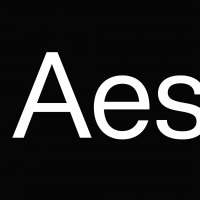Sans serif display fonts theory

Adam Ladd
Posts: 286
Curious, for more conventional genres of sans serif (grotesques, geometrics, etc.), I've wondered about the different approaches that may be taken for a display version. This is more in the context of designing a sans face that is more "text" oriented, but then has a display counterpart. Typical considerations are at play with spacing tightness, contrast, apertures, x-height, etc.
Approach and resulting design seems generally a little more clear when distinguishing text vs display in serif faces, but maybe less consistent or distinct (?) in a sans (depending on design and intent, and without the resulting design becoming a high-contrast sans that feels too unrelated.)
It's a bit muddy to me and don't think I've seen enough examples, but those I have seen that included both are Helvetica Now and Neue Haas Grotesk. Wondering about others that are liked out there.
Approach and resulting design seems generally a little more clear when distinguishing text vs display in serif faces, but maybe less consistent or distinct (?) in a sans (depending on design and intent, and without the resulting design becoming a high-contrast sans that feels too unrelated.)
It's a bit muddy to me and don't think I've seen enough examples, but those I have seen that included both are Helvetica Now and Neue Haas Grotesk. Wondering about others that are liked out there.
0
Comments
-
If you look at old foundry type specimens, nearly all styles were cut with a particular size in mind, including sans faces. Generally, the smaller sizes are a little wider and more loosely spaced with fewer subtle details and larger x-heights.4
-
Adam, this is an interesting question and one I've grappled with lately due to designing a display cut of a geometric sans for text. I'd be interested to hear community members comments.0
-
My intuition says that low-contrast/monoline sans styles work best at a middle size range: as you get into smaller text sizes, you need some contrast to keep it legible; and as you get into larger display sizes, you need some contrast to keep it interesting. So serif* faces would have a single spectrum starting from the smallest sizes (contrast increasing the whole way), while sans faces would lose contrast for a while, then gain contrast.
(* Here I'm really using "serif" as as proxy for "modulated" as I think you are too--monoline slabs would work like the "sans" category.)
More obviously, sans faces can have a much broader range of workable weights at display sizes. At a given weight, the variables Mark mentioned are what I would have come up with. But maybe worth mentioning that with well designed sans faces, the magnitude of difference in tightness of spacing I think can be much greater than you find in serifs.1 -
I like Sharp Sans Display, because especially in the darker weights the spacing and kerning is interesting. Rather than trying to balance whitespace, it adopts a kind of close-but-not-touching principle that is equal for all letters.0
-
The x-height thing has always seemed interesting to me. If you ask me, titles need a large x-height to look like a nice 'block' of text that fits comfortably in a layout, whereas small text forms blocks more easily, because it's multiple lines and, well, actually a block. From this point of view, I'd say a text version could have (but doesn't necessarily need to have) a smaller x-height, but a larger x-height doesn't make sense.
On the other hand, there is the widespread misunderstanding that a larger x-height leads to higher legibility*, so that 'text' versions of popular fonts (e.g. Brandon Grotesque) end up with a larger x-height. Designers don't care whether it's called 'display' or 'text' of course, so now Brandon Text is used in display settings all around.
What is commonly agreed upon, I think, is that a display sans can have:
- tighter spacing
- smaller apertures
- lower contrast if monolinearity is the point
- higher contrast if contrast is the point
*I'm convinced that it doesn't, it just makes for greater space efficiency. If you equalize x-height and maintain enough space between lines, longer descenders/ascenders (i.e., a smaller x-height) woud probably help legibility, but that comparison is rarely made. Please let me know if there is any empirical research on this topic. In my view, we should stop talking about x-height all together (I know, not gonna happen). It's more insightful to use the x-height as the reference, and talk about cap-height and extender length instead.
2 -
Part of where this wondering spawned from was some exploration of a sans being designed more mono linear (low contrast) and looser spacing. Then got me thinking about a display: Aside from tighter spacing and some potential subtly tweaked details in certain shapes/curves/joins, what would I do with the contrast in a display version... would there be any reason to increase the contrast (or even decrease slightly more), or just leave as is to maintain the mono linear look/feel. Questions that maybe come down more to design intent and decisions, rather than if there is a general expectation or precedent for designs like this.0
-
I would say decrease the contrast a little bit, but where you could see the biggest changes is in joints. They need to be thinned quite heavily in text, but can remain much more bulky in display.
0 -
Another thing is the distance of the dot on the /i and j/ as well as accents. Further away in text sizes, closer in display.3
-
Thanks for the feedback coming in. It was just kind of a strange one to tackle upon early experiments. With the low contrast / mono linear approach being the base, it felt like I was losing some of its intent and tone when I tested some rough looks at increasing the contrast slightly in the display. But the convention I’m used to generally dictates that (more so in serifs). So I was wrestling with that change being needed/wanted or not. (The points made about interest and legibility depending on the setting make sense.)For observation, and although different styles, Helvetica Now is more obvious in its contrast changes between subfamilies, while Sharp Sans is an interesting comparison and appears to have slight to imperceptible contrast differences between normal and display.0
-
I have been thinking about making some fonts with very discreet cap accents, for display.
I recall that somebody has done this recently—but can’t remember who.
0 -
Working from Display to Text my first concern is the redistribution of weight and amount of styles. Styles typically reduce down as you ideally need less of an array, as a Text family may or may not include 'additional' styles like Light, Black, or Semibold for example (although yes we have seen hairline weight display types redrawn to work at text sizes).
Second of concern is definitely the overall spacing as it needs to be drastically increased in my experience. This includes sidebearings, any 'space' related glyphs, and any glyphs that have precomposed space such as /ldot /ij, prebuilt fractions, ligatures, etc. If certain punctuation or encloser glyphs have really tight Display spacing, they might even need additional spacing on top of your default increases. There also may be particular glyphs or alternates that work better for Text, or you may spend some time modifying particular glyphs, depending on what you're trying to achieve and how they work in Text settings.
Contrast reduction for Text styles could conceivably help with the overall density and color of text, but I wouldn't necessarily consider it critical for the genres you've mentioned. For example, with a geometric type it's likely that you wouldn't want to increase contrast any more for Display, and there may not be much room to decrease it for Text if you're really trying to maximize the geometric direction, which typically entails a very low, monolinear contrast. Now this changes a bit if you move to a neo grotesk type, where the contrast issue may be more relevant and there's more room for a shift between Display and Text.
Increasing x-height has never really appealed to me for a variety of reasons, but it may be something you're interested in looking at. You also might want to look at the vertical metrics between ascenders and descenders at least, whether or not you choose to reconsider the x-height, as it all has an overall effect on the look of set text.
And remember too that a Regular Text style is likely going to need heavier stems than it's display counterpart, and this includes Light. Inversely, styles such as Medium, Bold, and Black have to be reduced in weight to work at Text sizes.
Short of designing ink-traps into the Text styles (might be best for a micro or agate families), you could consider either increasing tapering with adjoining stems, or at least create faceted joins (2-10pt units depending) across the entire family. Any joins that end in a single unit can be beveled to create a blunted join, reducing the sharpness, or brittleness of the form.
You may also want to expand the glyph set to include glyphs or features that may not be included in your Display family such as small caps, expanded ligatures (beyond the basic ff, fi, fl), discretionary ligatures (can be used to address clashes or odd pairings, etc.), oldstyle numerals, lining numerals, or anything else that may support the Text family.
2 -
Tim and Shoko’s seminal book on the subject, Size-Specific Adjustments to Type Designs, includes various examples for sans serifs with optical sizes.One series of note that was released after the book came out is Joshua Darden’s Halyard. It comes in three size-specific subfamilies, including an extreme Micro. See Stefan’s review for Typographica.5
Categories
- All Categories
- 46 Introductions
- 3.9K Typeface Design
- 487 Type Design Critiques
- 564 Type Design Software
- 1.1K Type Design Technique & Theory
- 656 Type Business
- 861 Font Technology
- 29 Punchcutting
- 521 Typography
- 119 Type Education
- 325 Type History
- 77 Type Resources
- 112 Lettering and Calligraphy
- 33 Lettering Critiques
- 79 Lettering Technique & Theory
- 559 Announcements
- 94 Events
- 114 Job Postings
- 170 Type Releases
- 180 Miscellaneous News
- 276 About TypeDrawers
- 54 TypeDrawers Announcements
- 120 Suggestions and Bug Reports






